The threat of a nuclear strike and total nuclear war is something most of us have hoped never to experience, but given the current political climate, it’s a possibility we can no longer ignore. Tensions are escalating globally.
On one hand, the war between Russia (a nuclear power) and Ukraine doesn’t appear to be anywhere near its end. Also, in the Middle East, the Israeli-Palestinian conflict appears to be on hold, but recently the Israel–Iran war has escalated.
World on Edge: The Fuse Is Lit in the Middle East
Things are heating up fast — and dangerously. On June 21, 2025, the U.S. launched airstrikes on key Iranian nuclear facilities (Fordo, Natanz, Isfahan), escalating the long-simmering Iran-Israel conflict into uncharted territory. President Donald Trump declared the strikes had “completely obliterated” Iran’s nuclear program.
Iran wasted no time retaliating, firing missiles at a U.S. base in Qatar. The US President responded with a call for a ceasefire on June 24, but both sides ignored it, continuing to trade blows. Donald Trump said it very clearly: “If peace does not come quickly, we will go after those targets with precision.” He also urged both Iran and Israel to “proceed to peace”.
Instead, Israel kept bombing, and Iran promised more retaliation. What we’re witnessing could spiral into regional or even global war, with nuclear implications.
Meanwhile, over in Ukraine, Trump sounded the alarm on Putin’s latest escalations, saying on May 29: “He’s playing with fire.” He warned the conflict could spark World War III.
Let’s Connect the Dots
- U.S., Russia, China, Israel – all nuclear powers
- Iran – suspected of holding an unconfirmed nuclear arsenal
- China – openly condemning U.S. strikes
- Russia – backing Iran
The geopolitical deck is stacked against peace. Every move from here on out could tip the balance into total collapse. Considering the circumstances, it’s crucial that we take the necessary steps to protect ourselves and our families.
Time might not be on our side, so preparing now, while we still can, could make all the difference between life and death.
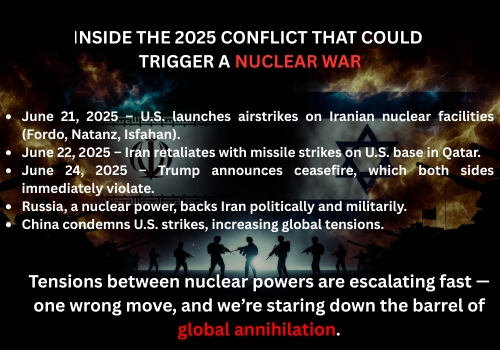
If the unthinkable happens, you’ll want to have a plan in place. Next, you’ll find out what steps you need to take right now to prepare for the worst and protect your life and your family.
Build or Choose Your Shelter for a Nuclear Strike
A good shelter is the key to surviving a nuclear event. This isn’t something you can improvise at the last minute. Ideally, you’ll want to have a sturdy, well-built underground bunker or a reinforced basement that can shield you from radiation. If you don’t already have one, it’s time to start planning and building—urgently.
Types of Shelters
- Underground Bunkers: These are the gold standard for nuclear fallout protection. Being underground offers a natural barrier against radiation. Consider building it with thick concrete walls (at least 12 inches) and a solid steel door to keep out radioactive particles.
- Basement Reinforcement: If an underground bunker is out of reach, your basement can still serve as a decent shelter if properly reinforced. Add several layers of dense material—like bricks or concrete blocks—against the walls to create a radiation barrier.
- Above-Ground Shelters: While not ideal, above-ground shelters can be reinforced with heavy materials like sandbags and concrete blocks to offer some degree of protection.
The key here is shielding—the more mass between you and the radioactive fallout, the better. Focus on creating as many barriers as possible between you and the outside world.
Stockpile Supplies Now. Don’t Wait!
Once you’ve secured a safe place to shelter, the next step is making sure you have enough supplies to survive while you wait for radiation levels to subside. The initial two weeks after a nuclear blast are the most critical, as radiation levels will be at their highest during this period.
Water
Water is your most essential resource. Plan on having at least one gallon of water per person, per day. Since you could be sheltering for two weeks or longer, this means storing at least 14 gallons per person. Consider using 55-gallon water drums for long-term storage and invest in a quality water filter to ensure a backup plan.
 If you don’t trust the water coming out of your tap right now — and honestly, who could blame you with everything going on in America — there’s a simple, powerful solution you need to know about.
If you don’t trust the water coming out of your tap right now — and honestly, who could blame you with everything going on in America — there’s a simple, powerful solution you need to know about.
It’s a backpack-sized water generator that literally pulls clean water out of thin air. That’s not science fiction — it’s the same tech used by the Israeli military to keep their troops hydrated in brutal, off-grid conditions. This little unit can crank out up to 50 gallons of pure drinking water per day. That’s more than enough to keep your entire family alive when the grid fails or your town’s water turns toxic.
Want to take water purity to the next level? Learn from the Amish — the ultimate off-grid survivors. In The Amish Ways Book, former Amish member Eddie Swartzentruber reveals the step-by-step process to build a non-electric, high-efficiency water filter that’s trusted by hundreds of self-reliant homesteads. No power needed, no nonsense. Just clean water — anytime, anywhere.
Food
Non-perishable food is crucial for survival. Canned goods, dried beans, rice, freeze-dried meals, and protein bars are all great options. Stockpile enough to last at least two weeks per person. Remember, you’ll want to include a manual can opener, as you may not have access to electricity.
Back during the Cold War, the U.S. military developed a secret survival food — a so-called “Doomsday Ration” — designed to feed the entire American population during extreme crisis. This wasn’t some luxury meal… it was engineered to be dirt-cheap, shelf-stable, and packed with enough calories to keep an adult alive and functional for just $0.37 a day. You can find the exact recipe right here.
Radiation Detection
A Geiger counter or other radiation detection device will be crucial for understanding when it’s safe to leave your shelter after a nuclear strike. Without this, you’re essentially flying blind.
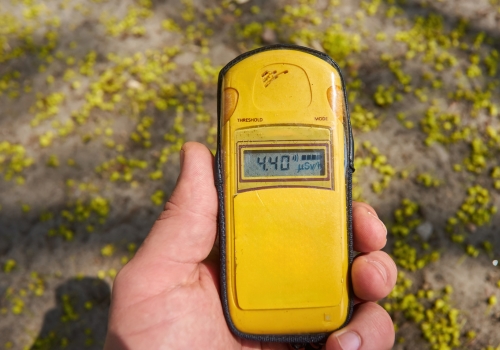
Medical Supplies
In a nuclear scenario, there’s one thing you can count on: no one knows how long it’ll take for things to go back to “normal.” Truth is, they might never go back. Hospitals? Gone. Pharmacies? Looted or shut down. Even basic medical care could be unavailable for weeks, months… maybe even years. In that kind of chaos, something as minor as a tooth infection or a small cut could kill you if it goes untreated. You’ll need to be your own medic. Stock up on:
- First Aid Kit: Include bandages, antiseptics, gauze, medical tape.
- Potassium Iodide Tablets: These can help protect your thyroid from radioactive iodine if taken shortly after exposure.
- Over-the-Counter Medications: Pain relievers, anti-diarrheal meds, and any vitamins you think you may need.
- Antibiotics: You need to stock up on real antibiotics—before the shelves are empty. You can’t afford to wait for someone in a lab coat to write you a prescription after it all goes down. The Home Doctor shows you exactly how to get your hands on life-saving antibiotics without a prescription. It’s simple, fast, and could mean the difference between life and death when SHTF.
Understand Fallout—Knowledge is Power
Fallout is the radioactive material that falls back to earth after a nuclear explosion. Understanding what fallout is and how it moves can give you a significant survival edge.
Fallout Basics
After a nuclear blast, fallout will be carried by the wind and can travel hundreds of miles from the original explosion site. The most dangerous fallout particles are generally heaviest and will settle closest to the detonation site within the first 24 hours. However, lighter particles can drift for days, which is why staying indoors for at least two weeks is recommended.
The amount of radiation released during fallout decreases over time; a principle known as the Seven-Ten Rule: for every sevenfold increase in time, radiation exposure drops by a factor of ten. This means that after two weeks, radiation levels will be about 1% of what they were immediately after the explosion.
Have an Evacuation Plan—Even If You Don’t Want to Use It
While staying put is generally the best course of action during the fallout period, there are scenarios where evacuation might become necessary. If your shelter becomes compromised or if you receive credible information that a secondary strike is coming, you may have no choice but to leave.
Key Points for Evacuation
- Know Your Routes: Plan multiple routes out of your area, avoiding major cities or military targets.
- Keep a Go-Bag Ready: Your go-bag should include water, food, a flashlight, batteries, important documents, cash, and protective clothing.
- Transportation: Make sure your vehicle is fueled up and ready. Gas stations may not be operational in the aftermath of a nuclear event.
Communication Is Vital—Don’t Be Left in the Dark
Communication lines will be severely impacted during a nuclear event. Cell towers and the power grid may be down, and getting reliable information could be difficult. This is why having alternative forms of communication is vital.
Emergency Radios
Invest in a hand-crank or battery-powered emergency radio that can pick up NOAA (National Oceanic and Atmospheric Administration) weather alerts and emergency broadcasts. These radios are often equipped with multiple power options and can provide crucial updates regarding radiation levels or evacuation orders.
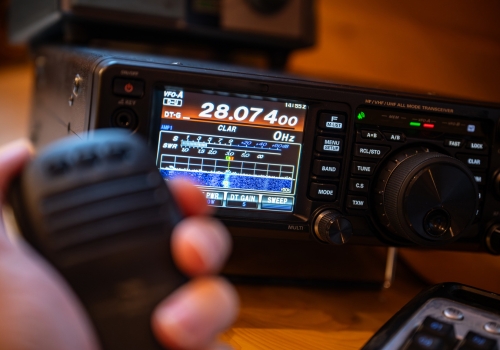
Mental Preparedness—Staying Sane After a Nuclear Strike
Nuclear war is an unimaginable scenario for most of us, but mental preparedness can be just as important as physical supplies. Staying calm and having a plan can make the difference between panic and survival.
Ways to Stay Mentally Strong In Case of a Nuclear Strike
- Practice Your Plan: Go through your nuclear drill at least once. Knowing what to do ahead of time will make you feel more in control.
- Keep Busy: During the fallout period, try to keep your mind occupied. Play games, read, or find other activities to keep spirits up.
- Stay Informed: Knowledge reduces fear. Keep up with emergency broadcasts to stay informed about what’s happening outside.
Protective Clothing—Every Barrier Helps
If you need to venture outside during or after the fallout period, having proper protective clothing is vital. Wear layers, including a raincoat or poncho, gloves, and goggles to keep radioactive particles off your skin. Once back inside, remove and store contaminated clothing away from your living area.
Just a Few More Details to Consider
According to Joel Lambert, a well-known former Navy SEAL with over a decade of experience in special operations, your #1 defense against a nuclear strike is distance. You won’t know where the bomb will drop — that’s the hard truth — and radioactive fallout can travel hundreds of miles with the wind. But here’s the rule of thumb: you need to be at least 14 miles (22 kilometers) away from any strategic target — because those are the 99.99% most likely locations to be hit in a nuclear attack.
In A Navy SEAL’s Bug-In Guide, Lambert lays out the complete list of high-risk strategic targets across the U.S., and more importantly, four critical safe zones where you can actually survive the blast and fallout.
Here’s what else you’ll find in this no-nonsense survival guide:
- The Post-Nuclear Attack Communication Blueprint
- Where Exactly to Find Shelter in the Event of a Nuclear Strike
- Powerless Items to Stockpile for the Next Blackout
- How to Make the Ultimate Survival Food with a 25-Year Shelf Life
If you’re serious about keeping your family alive when the worst hits, this book is one of the smartest resources you could have on your shelf.
Final Thoughts
Let’s face it — recent events are showing just how fast things can spiral out of control. We may not know the exact hour or day when a nuclear strike could happen, but one thing’s clear: the risk is real, and it’s growing by the minute.
The more prepared you are, the better your chances of survival. Hesitation could cost you your life, while action today might save it tomorrow. Don’t get caught unprepared—because when time runs out, it’s already too late.
There’s a real chance that a nuclear strike won’t be the first punch — it could be an EMP. To stay ahead of the chaos, make sure you’ve got this military-grade shielding material at home.
You may also like:
Nuclear Powers, the Rise in the Middle-East and the New Bomb
Army Survival Strategies and Tips to Use in a Crisis (Video)
Nuclear Protection Supplies You Need To Have Ready

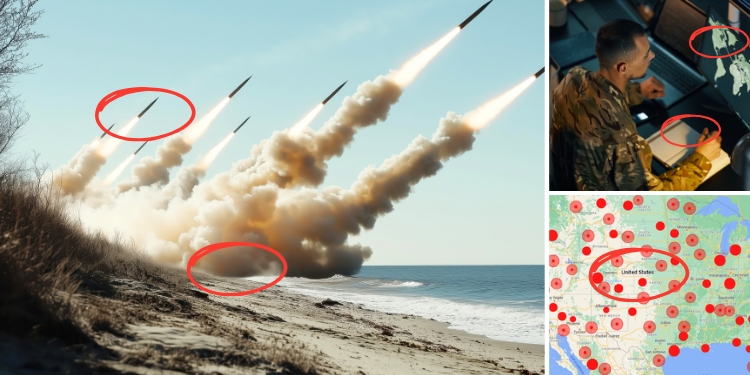
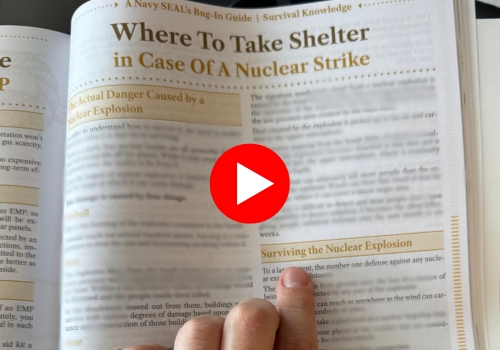
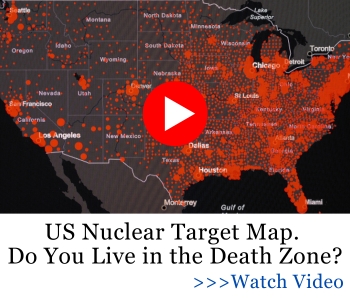




















You don’t need 12″ concrete walls in an underground bunker but you you do need 4 feet of compacted soil overhead to stop the higher energy gamma radiation from fallout. The classic fallout shelter has a steel outer door, a short flight of steps followed by another flight of steps at a right angle. Gamma radiation will penetrate the outer steel door but it travels in a straight line and will not turn the corner down to your inner door. When I was a kid a family in the neighborhood had a state of the art fallout shelter in their backyard, everybody would blush to know what all we did down there hidden from the adult world.
I am a poor peasant on Social Security retirement. The county where I live, I doubt they would let people like me take shelter in their fallout shelter. No matter where you live, social status plays a big role in everyday life and will much more in a SHTF. Don’t be ignorant of this. That’s why it is to our own benefit that we do all we can to be prepared the best we can.
yea, the social status thing. it’s those who spend more than they make on cars and houses thinking that tommorow will never come who will be the most dangerous. very little food and no water, they will become desperate and dangerous. has anyone here ever lived homeless, i have after my father died in 77, no food, and water was where i could find it.. iwas 16 then and i don’t think that i could do it again, it was a very hard and dangerous life but in hindsite it was a good education in how to get by with very little.
the so called poor farmers with food and water will become kings, and prime targets i fear.
i’m in a good place now.
ya’ll take care
Thanks for the article. While talking about countries with nuclear weapons and one follows the dots. Wanted to add a little bit more with the tensions in other locations around the world, North Korea is sending troops and supplies to Russia for the war against Ukraine. North Korea has nuclear weapons. Israel has not formally acknowledged they have such but most likely. Then lets go to the tensions in India and Pakistan which both have nuclear weapons. Last on the list is United Kingdom and France.
I was homeless at 17. Then my father died, and an aunt got custody of me and my younger brother. She collected Social Security for us on our father’s social security number. I turned 18 and the social security she was getting for me stopped because I wasn’t attending school. Since she was no longer receiving an income for me, I had to leave. i was homeless again. It was hard but somehow I survived.
Eventually my younger brother got tired of the aunt’s bs, and he left and went and stayed with some strangers. They treated him better that our aunt.
I have been homeless several times in my life. Divorce took everything I had except and old Ford van. I lived in the van.
I was much younger back in those days, and I was able to survive homeless living. I’m 67 now, and I’ve had two major surgeries. I’m not sure I could handle homeless living again. I hope I don’t have to find out. These articles are great, but I know what real life is like. I have lived it. With me, I had no family to turn to for help. Life is real, and I can’t remember a time when it wasn’t kicking me in the hindend. My advice is, make sure you are preparing for yourself, and even then there’s no guarantee that you won’t lose everything. I never planned on losing my health, but it happened. Just do the best you can and disconnect yourself from the wrong people.
Thank you for sharing your story — that takes strength. What you’ve survived would break most people, yet you’re still standing and still warning others from hard-earned wisdom. That kind of honesty — not the sugarcoated kind, but the kind born from sleeping in vans and burying family — is more valuable than a thousand prepper checklists. You didn’t just live through hard times. You are what survival looks like when it’s not romantic, when it’s painful, lonely, and real.
You make a powerful point: prepping isn’t about bunkers or bug-out bags alone — it’s about building the mental grit to stand back up when the world strips you down to nothing. You’ve lived without backup, without safety nets, and without a guarantee. That’s the truth most folks don’t want to face: survival isn’t a weekend hobby, it’s a lifelong fight, and sometimes the enemy is your own blood. But your words carry a torch for those walking that same path — especially the ones growing older or dealing with failing health. You remind us that time is just as much an opponent as disaster.
Your advice — prepare for yourself, and cut off the wrong people — might be the most important survival tactic there is. No gear can replace self-awareness, resilience, or clean boundaries. I hope you never have to face that kind of hardship again, but if you do, I wouldn’t bet against you. You’ve already proven you can survive what most folks can’t even imagine. Thank you again for speaking up — your voice matters more than you know.